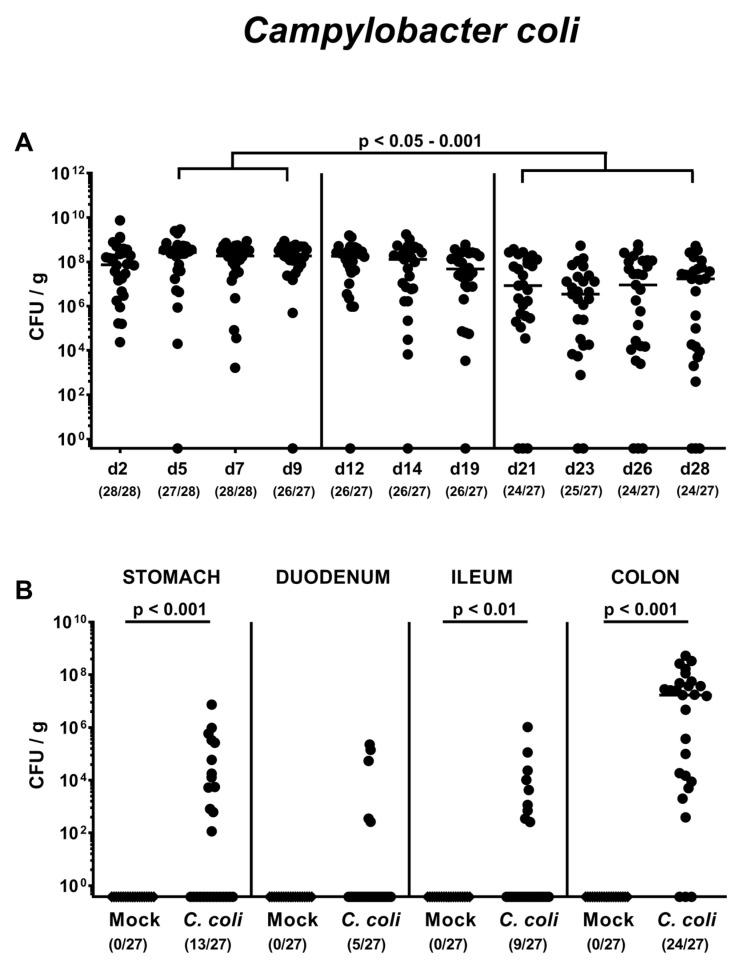Figure 1.
Gastrointestinal Campylobacter coli colonization following peroral infection of aged conventional IL-10-/- mice. Ten- to 12-month-old conventional IL-10-/- mice were perorally challenged with C. coli on day (d) 0 and d1 (circles) or received vehicle (mock controls; diamonds). (A) The intestinal colonization properties were surveyed over time post-infection by cultural analyses of fecal samples taken at distinct time points (expressed as colony forming units per g; CFU/g). (B) Upon necropsy on day 28 post-infection, C. coli loads were determined in distinct compartments of the gastrointestinal tract. Medians (black bars), levels of significance (p-values) assessed by the Kruskal–Wallis test and Dunn’s post-correction and the Mann–Whitney U test as well as numbers of culture-positive mice out of the total number of analyzed animals (in parentheses) are indicated. Data were pooled from four independent experiments.

